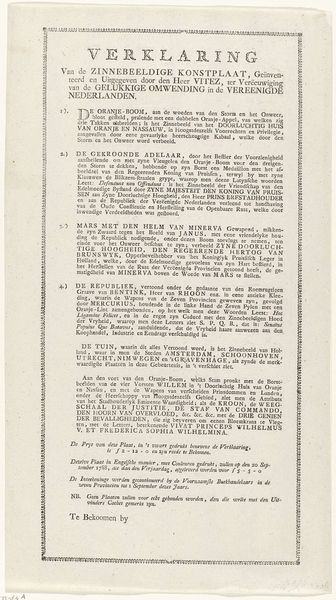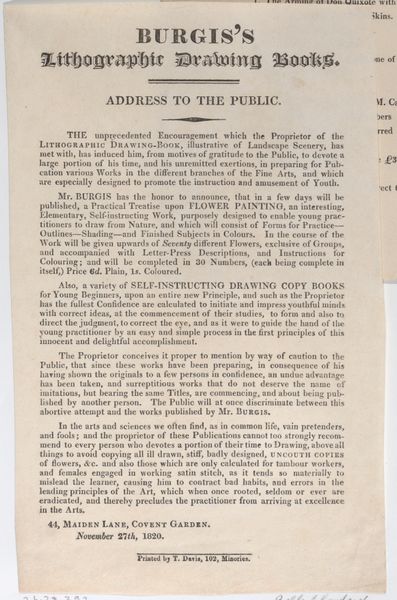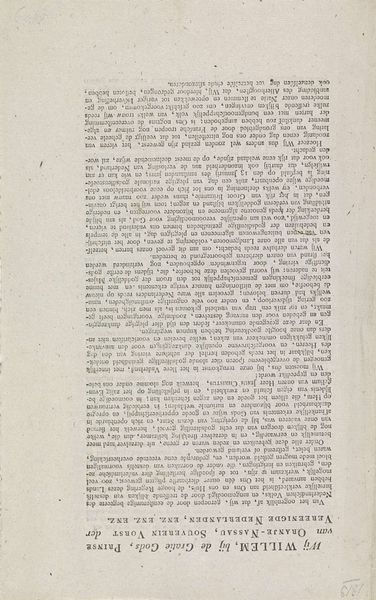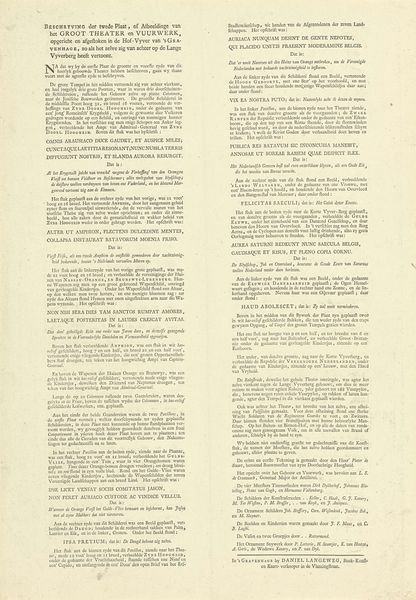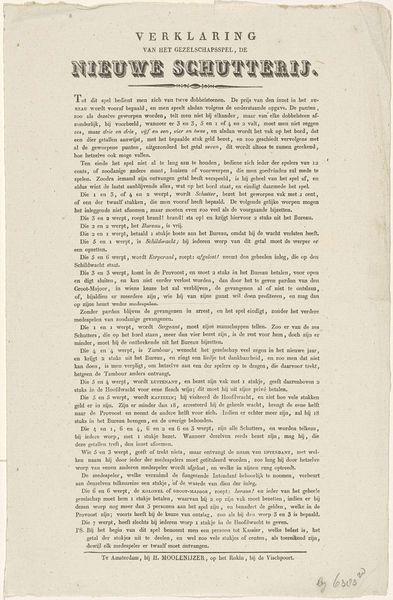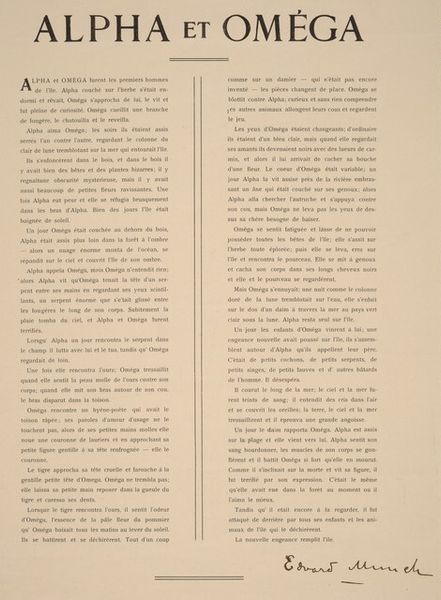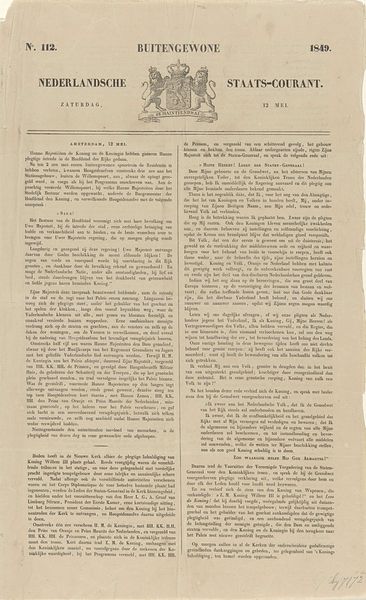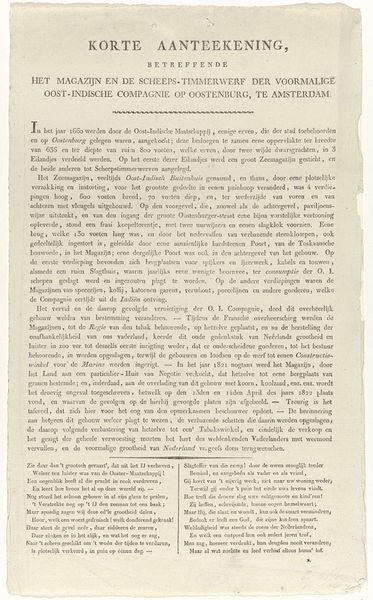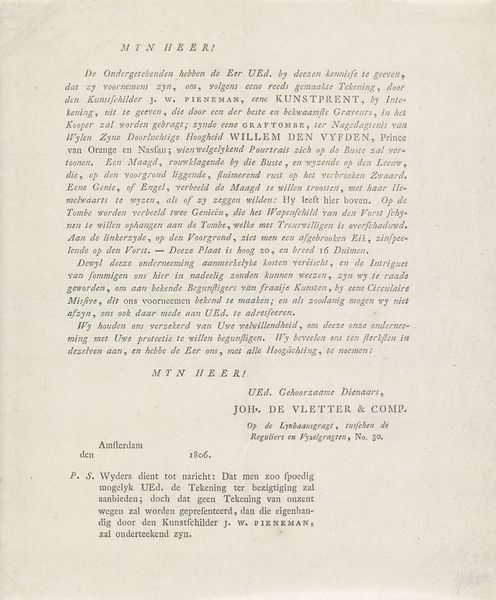
Proclamatie vanwege de Commissarissen aan Amsterdam, 1813 Possibly 1813
0:00
0:00
print, typography, poster
#
neoclacissism
# print
#
typography
#
classical type
#
poster
#
historical font
Dimensions: height 760 mm, width 447 mm
Copyright: Rijks Museum: Open Domain
This proclamation was made in Amsterdam on the 25th of November 1813 by Johannes van der Hey, a bookseller. The text is printed in letterpress on paper, a process that involves arranging individual, moveable letters to form words and sentences, inking them, and then pressing paper against the inked surface to create a printed impression. In this case, the qualities of the paper – its thinness and absorbency – enabled the ink to take hold, resulting in a clear, legible declaration, which would have been posted as widely as possible. The deliberate arrangement of type, and the relatively quick printmaking, emphasizes its social and cultural significance, and its role in disseminating information. Consider how the mass production of printed materials like this during the early 19th century relates to wider issues of labor, politics, and consumption, making it possible to rapidly disseminate pronouncements to a broad audience, fostering a sense of collective identity. Recognizing the role of materials, making, and context helps us appreciate the full meaning of an artwork, and how these materials challenge traditional notions of fine art and craft.
Comments
No comments
Be the first to comment and join the conversation on the ultimate creative platform.
